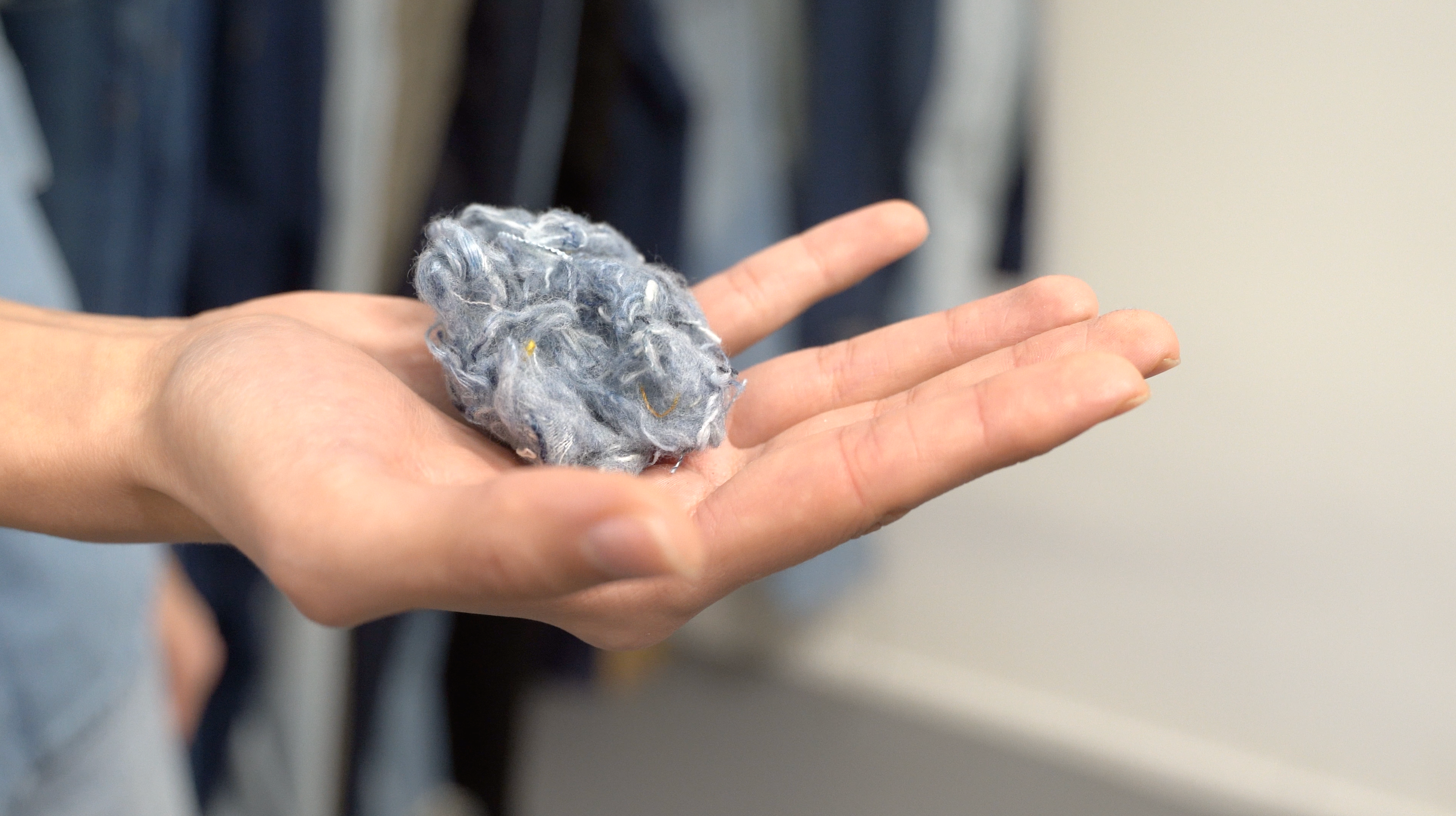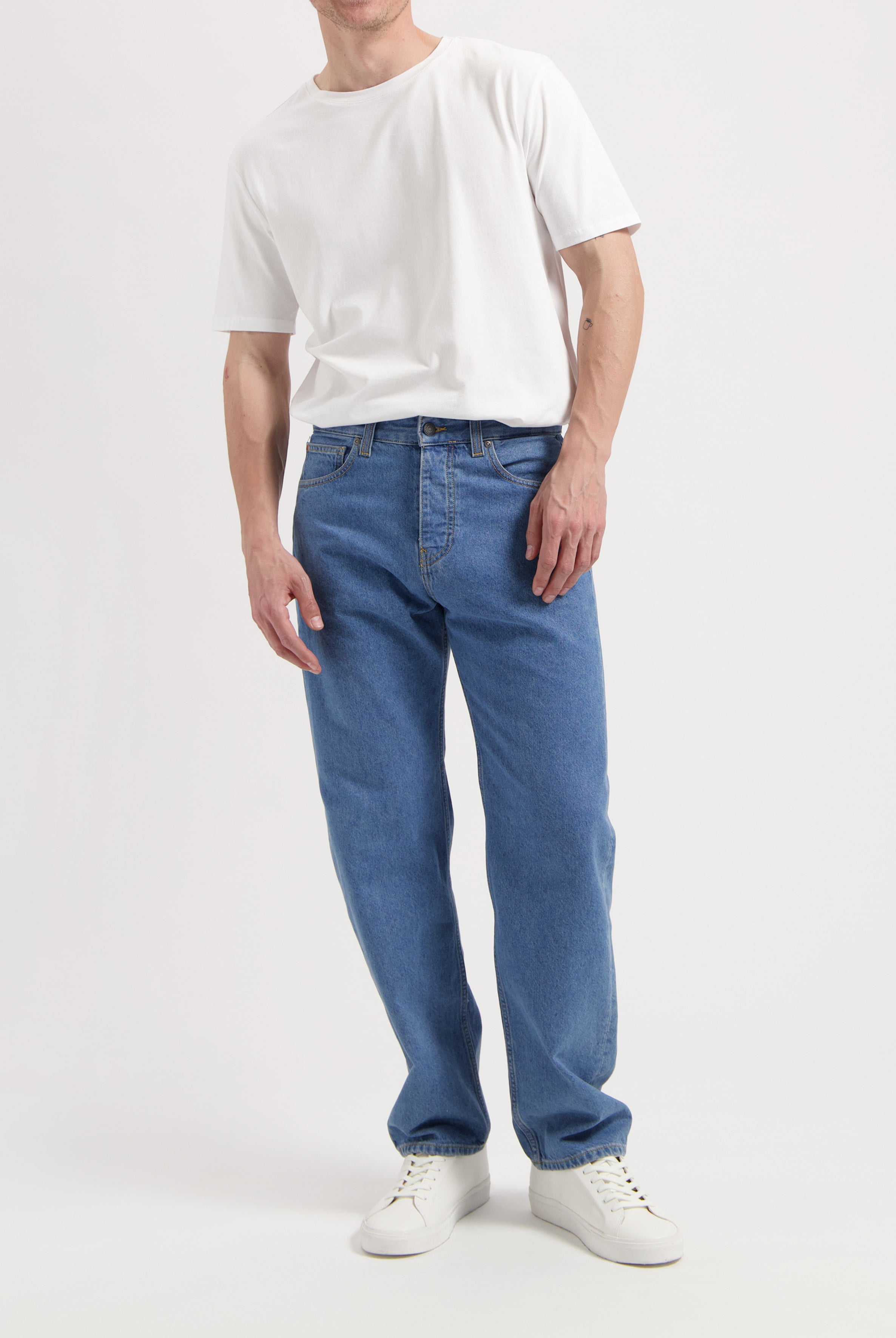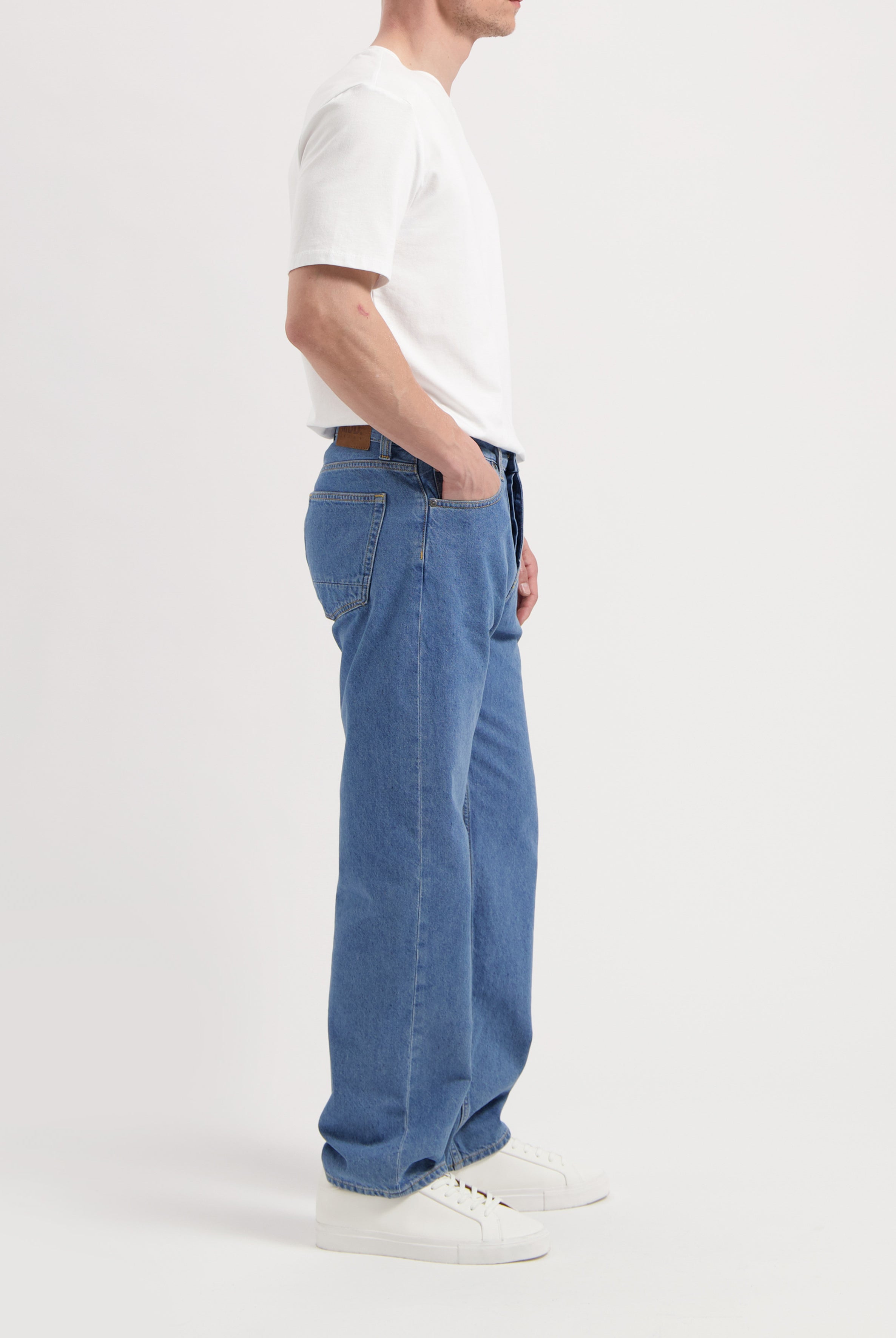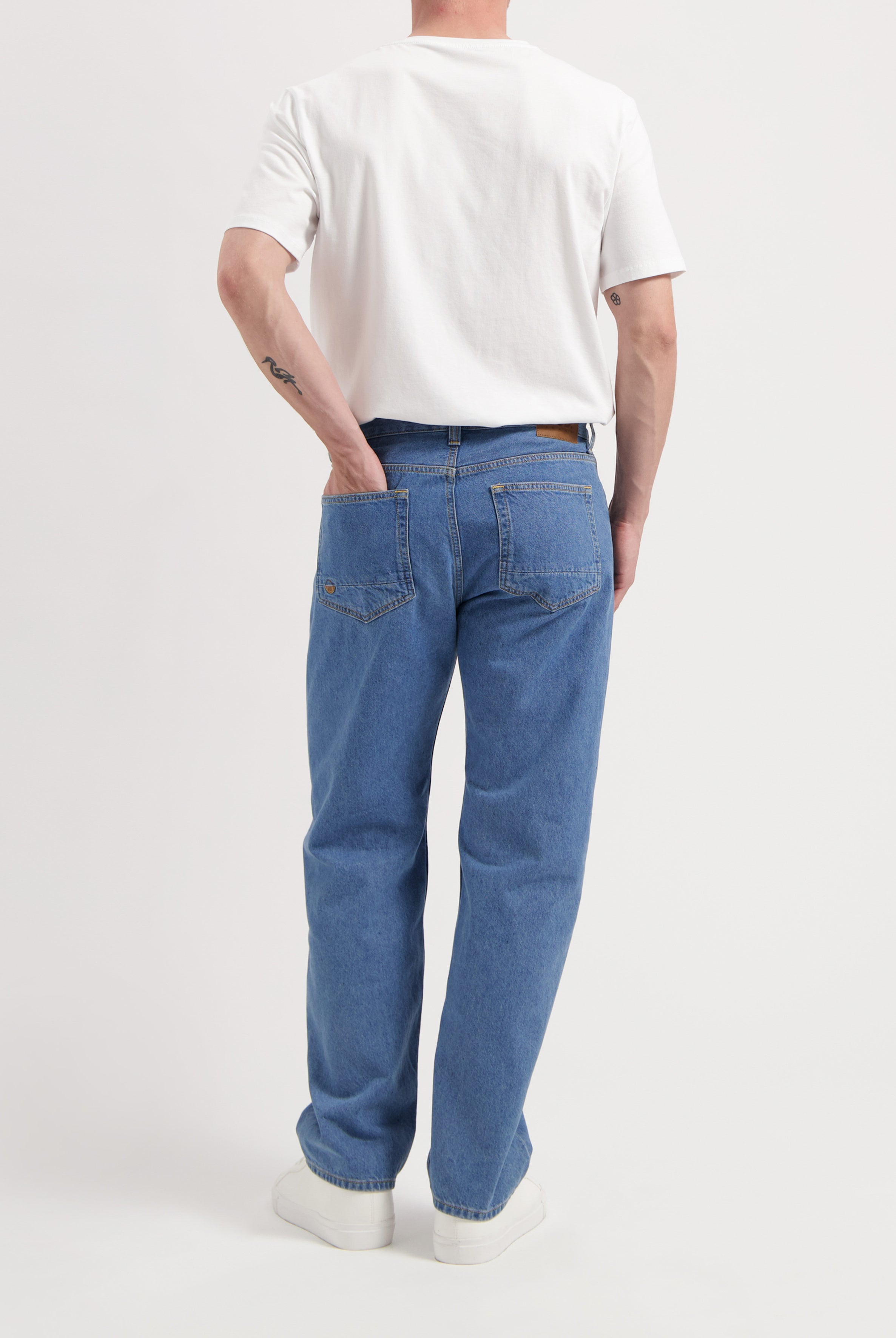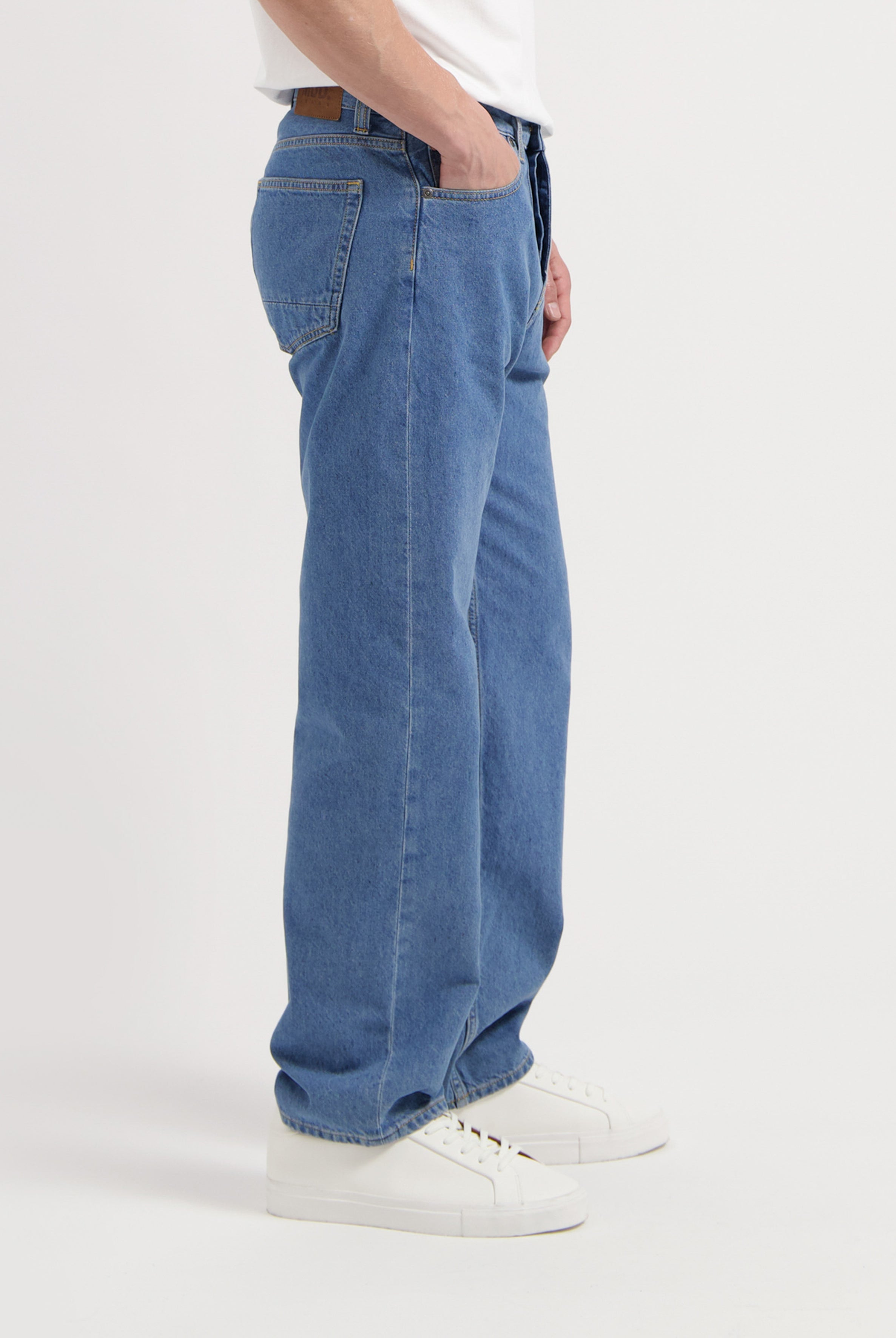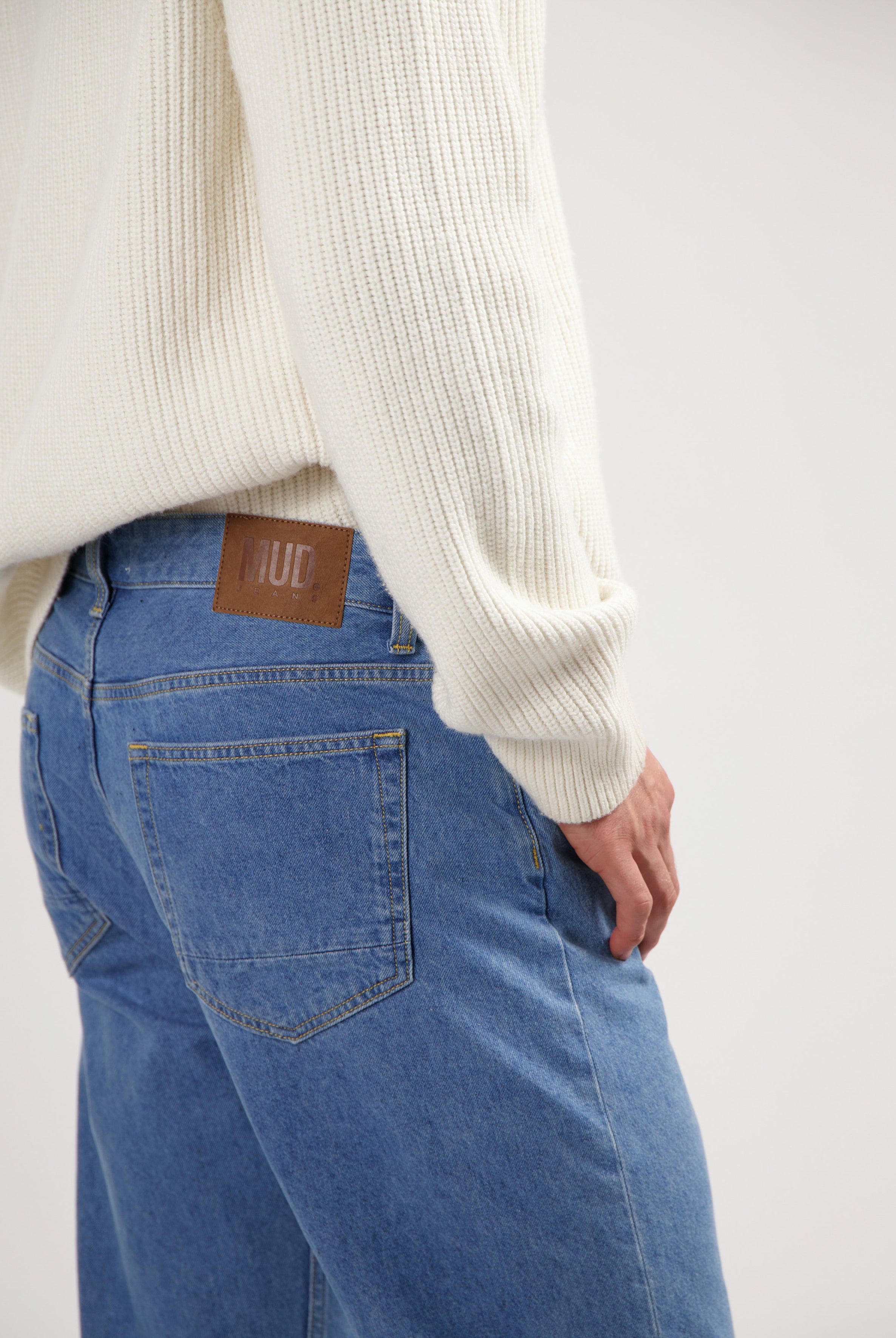[[ROW-INTRO]] "It is not easy being green" - this is true for Kermit the Frog and true for MUD Jeans' uphill journey with post-consumer recycled (PCR) cotton. Using PCR cotton is the most sustainable and impactful recycling approach, but it is also the least popular. Why? Because it is freaking hard to use! [[ROW-INTRO-END]]
A few definitions
Since this is what our jeans are made of - let's focus on cotton. Most of us are familiar with the term "recycled cotton". However, depending on where you get the old/used cotton from, defines what type of recycled cotton it is.
Post-consumer recycled cotton: this is the type of cotton that comes from garments which have been sold to and used by the consumer.
Pre-consumer recycled cotton (cutting waste): this is the type of cotton that comes from the waste that is produced in the manufacturing process.
[[ROW-FULL-IMAGE]]

[[ROW-FULL-IMAGE-END]]
Why use PCR cotton?
You might be thinking: if it's so hard to use, why use it? Simply put: using PCR cotton directly tackles the big waste problem of the fashion industry. Of course, in this case we are just talking about cotton and there are many other kinds of material combinations. However, the main point is not so much the material but the problem solving approach. Globally, 92 million tonnes of textile waste are created every year. This waste mainly comes from consumers throwing away their clothes and buying more. But imagine we could take this "waste" and use it again? Boom! Walks in PCR cotton (and all its other PCR buddies). Waste is not waste until you waste it. By using these materials again, waste is avoided and the environment is a little bit better off for it. Other recycling approaches, like using cutting waste, are good but their impact and solution scope is not as wide. This is because the major waste problem is at the product's end of life and not at the manufacturing stage.
[[ROW-FULL-IMAGE]]

[[ROW-FULL-IMAGE-END]]
The challenge
Working with PCR cotton is difficult and that is why not many brands use it. It turns out to be much easier to work with other recycled material like fabric waste - they are cheaper and more "well-behaved" in the process of manufacturing.
PCR cotton requires that someone is collecting the old garments, sorting them by material type and recycling them. This is very labor-intensive and therefore expensive. Last but not least, making fabric with PCR cotton is difficult as it has a high risk of imperfections.
[[ROW-FULL-IMAGE]]

[[ROW-FULL-IMAGE-END]]
If at first you don't succeed, try, try again
MUD Jeans has been very persistent in finding solutions to work with PCR cotton. We often go for the hard road because we believe the outcome will lead to real change in the fashion industry. So far this has worked! We have demonstrated that circular denim, and therefore circular fashion, is possible. Today, we make jeans that contain between 23-40% PCR cotton. However, to reach this outcome, there were many obstacles that had to be overcome.
[[ROW-FULL-IMAGE]]

[[ROW-FULL-IMAGE-END]]
The first challenge is working with your own waste. Many brands that use PCR cotton don't work with their own waste but rather choose to work with old bed sheets or linen. Why? Because it's easier. But the issue with this approach is that you are not directly tackling the fashion waste problem, nor pushing innovation to find solutions for it.
Working with old denim (denim waste) is particularly challenging because the recycled fiber that comes out is very short. With short fibers, it is difficult to create durable yarns and fabric. Difficult but not impossible. By working hard and closely with our suppliers, through multiple trials and fails, unique techniques and softer washing processes were developed.
[[ROW-FULL-IMAGE]]

[[ROW-FULL-IMAGE-END]]
This was the case with many of the difficulties that come with working with PCR cotton, including irregularities in the fabric and imperfections. Slowly however, through trial and error, as well as strong collaboration, these obstacles were overcome. The outcome: the amazing MUD Jeans that use between 23-40% PCR cotton, were we use our own materials over and over again and take responsibility over our own waste.
The battle is not over yet. There is a lot more to improve and make strong. But if we can use 40% PCR today, who says that we cannot use 100% PCR tomorrow. Go big or go home right?
Moral of the story:
To reach real change, you have to tackle the problem head on. Even if it's difficult.





